Although frogfish are relatively well known critters to divers in the Indo-Pacific, photographers, and muck divers, that has not always been the case. Stories of frogfish and their accompanying drawings and sketches have existed for hundreds of years, with encounters spanning the globe. The first ever documented frogfish encounter comes from Brazil. At some point before 1630, a drawing was given to the director of the Dutch West India Company. A woodcut was made from this drawing, and that woodcut was published in 1633. The first documented frogfish from the Indo-Pacific was in 1696. A ship captain in Western Australia was quoted as seeing a fish “…about two feet long, with a round head and sort of arms and legs and even something like hands.” Sounds like a frogfish to me!
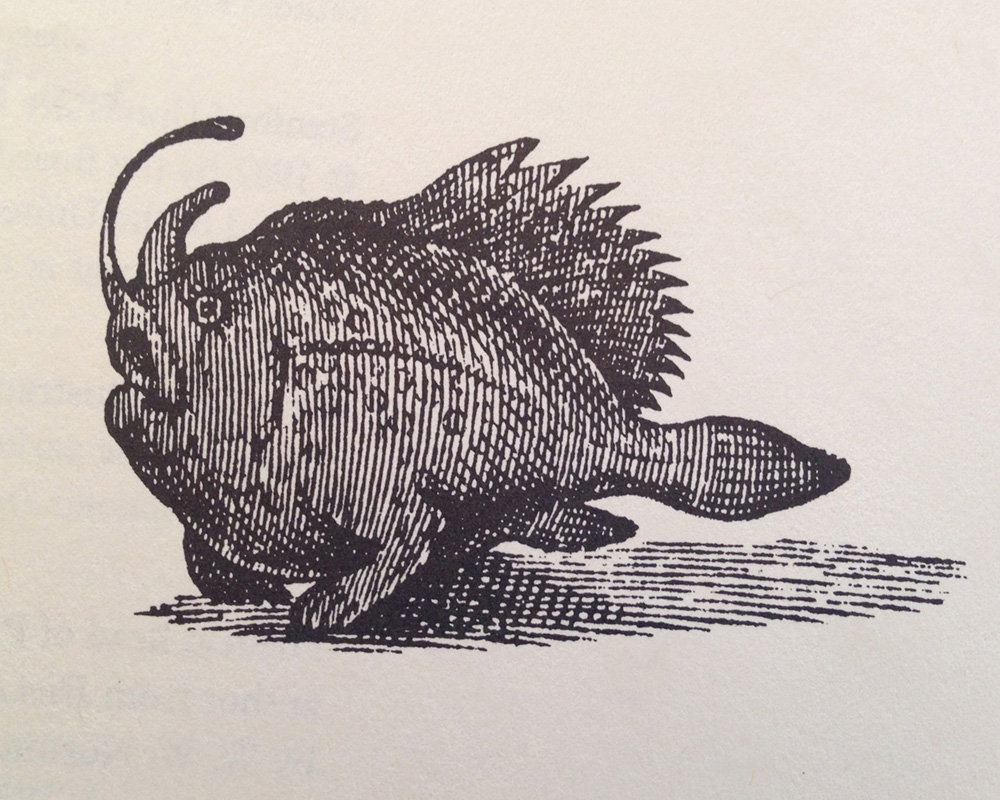
Earliest known frogfish image from around 1630
The first color drawing appeared in 1719, published by Louis Renard, an agent to King George I of England. He published a collection of color drawings of Indo-Pacific fish and other organisms and some of these represent the earliest published figures of Indo-Pacific frogfish. One was called Sambia or Loop-visch which translates directly into “walking fish”. Although the drawing has some features that are not found in frogfish, such as claws, it is assumed that this drawing, as well as a few others, are his version of a frogfish.
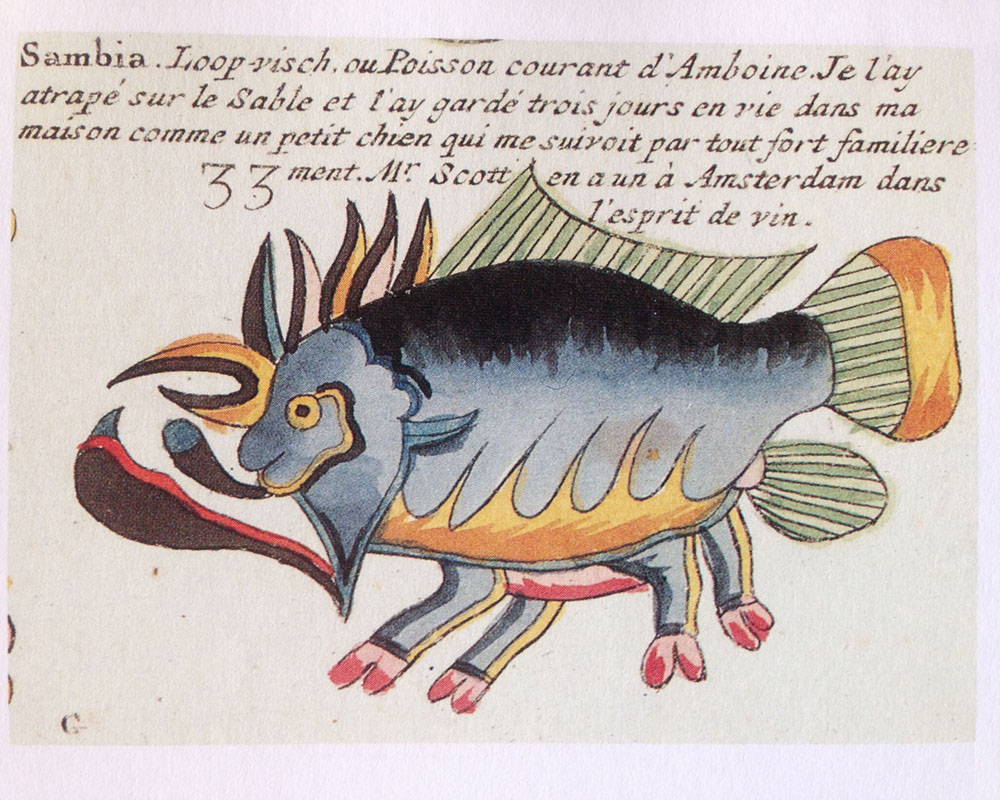
Although it looks like an alien, this is agreed to be the first color drawing of a frogfish.
The next scientist to come along was Albertus Seba who believed that frogfish were amphibians. He thought that frogfish were the tadpole-like fish stages of frog development. He used the Latin name Rana piscatrix to name his frogfish, which translates to “fishing frog”. This is important because it shows he had knowledge of their predation strategy. His drawings included two identifiable species, as well as some nudibranches. It is thought that he “felt obliged” to discover the metamorphosis of frogfish to true frogs. This may have caused some confusion and why he felt that these nudibranches were actually juvenile frogfish. Their gill placement was similar to the placement of the fins on the frogfish which could have been how he linked them together.
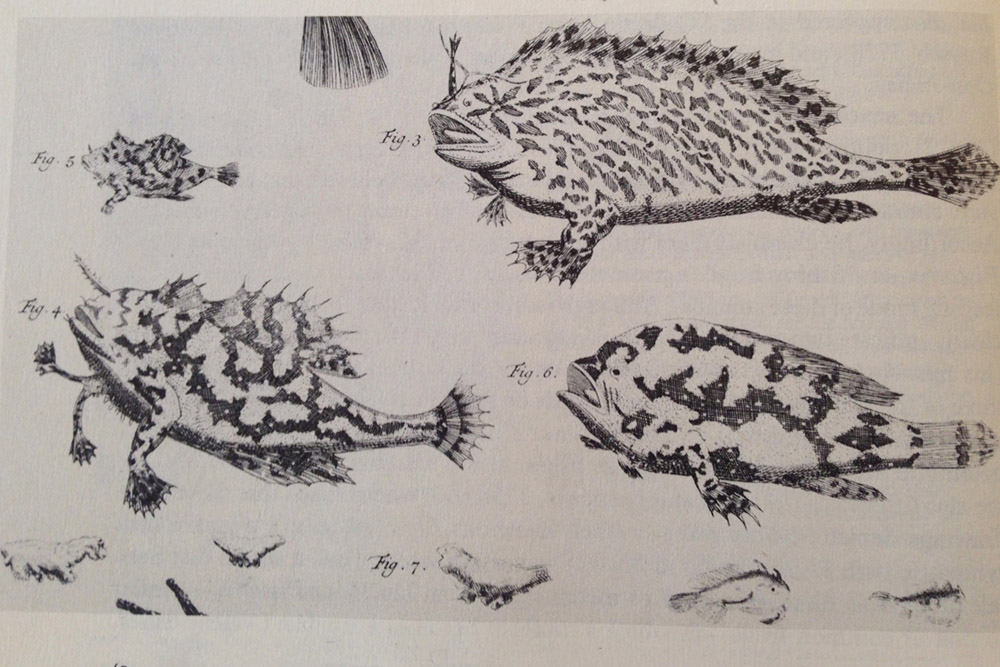
You can see a Hairy Frogfish (Fig. 3) as well as Sargassumfish (Fig. 4,5,6) with the nudibranches in the bottom left corner.
Philibert Commerson was the first person to attempt a serious study of frogfish. He was a botanist and naturalist employed by the King of France and described four species from Maritius. At least two are described in great detail and three have drawings that leave no doubt to the species. He was also the first to use Antennarius as a Latin description which is what we use today.
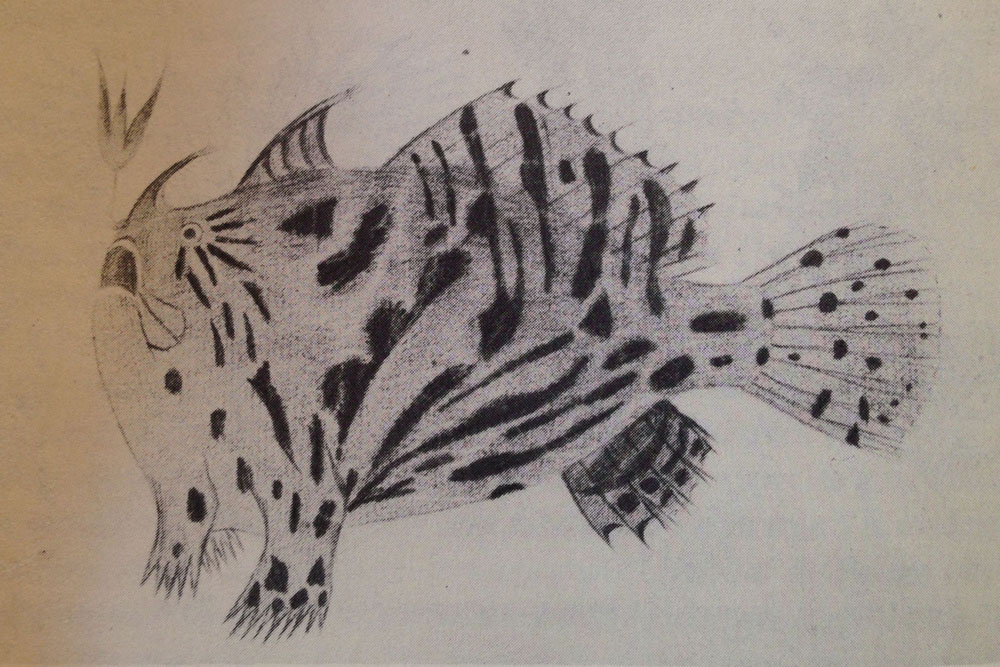
One of Commerson’s frogfish that leaves no doubt as to the species – Hairy Frogfish.
There have been plenty of identification problems when it comes to frogfish, even today. Albert Gunther, a scientist who attempted describe the different species of frogfish, said in 1861 that “[their] variability is so great, that scarcely two specimens will be found which are exactly alike…although I have not the slightest doubt that more than one-half of [the species] will prove to be individual varieties.” He listed over 30 species, but only 9 of those species are accepted today. Since 1758 there have been over 165 species described and over 350 combinations of names. Currently there are around 50 accepted species, roughly one third of the total species described.
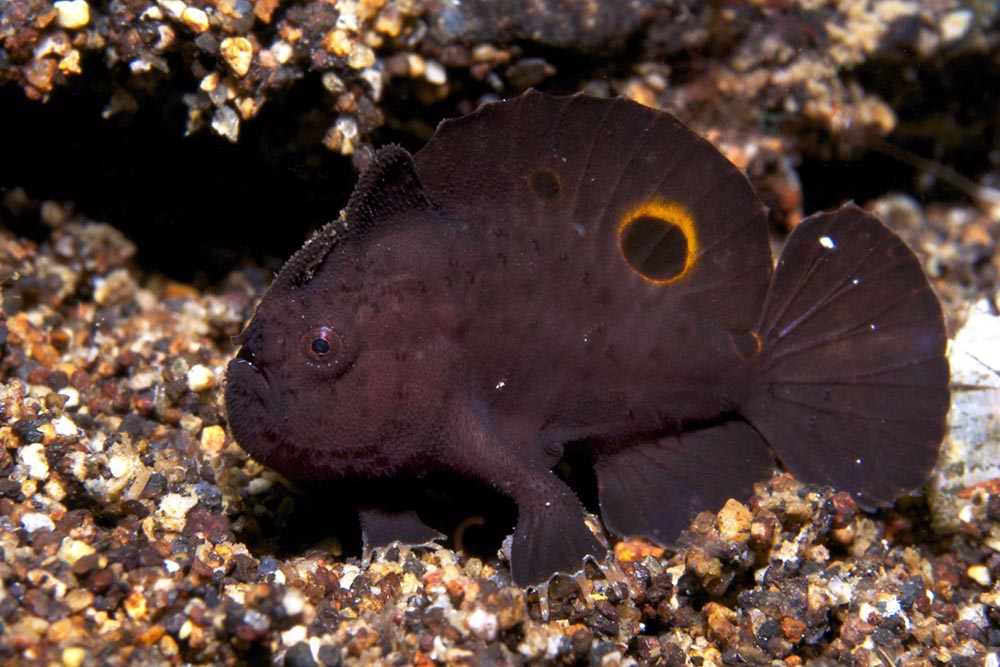
This “Ocellated Frogfish” is an undescribed species, although I believe it is an already existing species that not much is known about.
Much of the literature from before the 1980s goes against what we know about frogfish today. One scientist said as recently as 1972 that “most anglerfishes are ugly and colorless” and will not make good aquarium pets. How wrong he was! With the advancement of scuba diving and underwater photography, we know that frogfish come in every color, sometimes even bright yellow or orange. Frogfish can become a very enjoyable aquarium pet. (as long as they are captive bred, no wild caught please!) You can watch them hunt and, if you keep your aquarium colorful, they will stay colorful to match their surroundings.
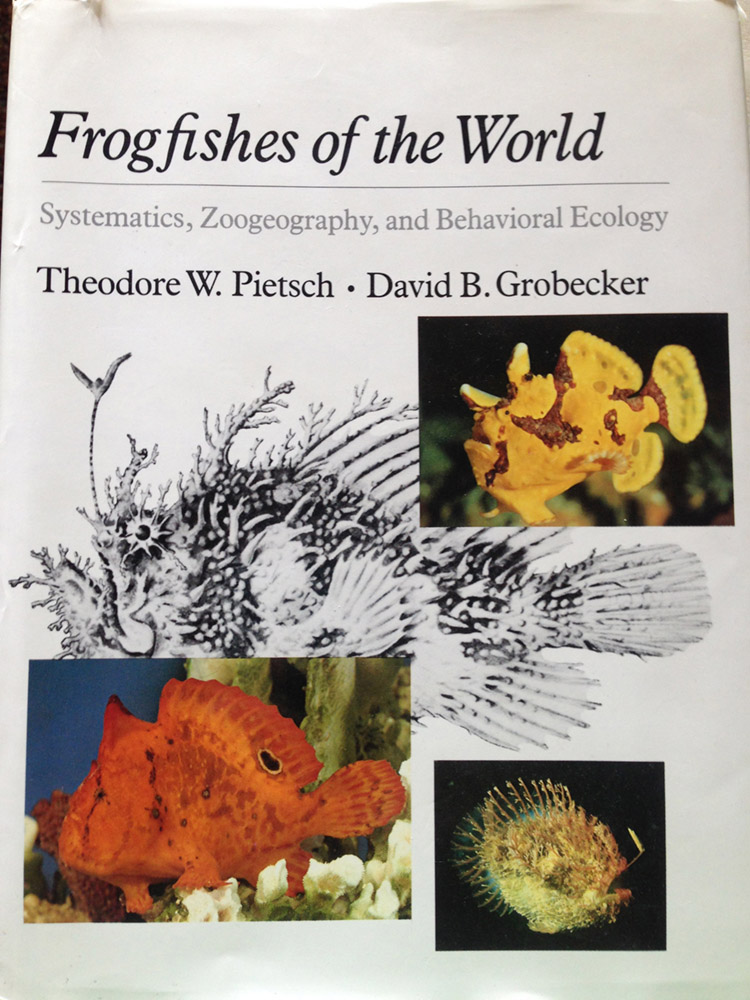
Even though we know a lot more about frogfish that we did even thirty years ago, there is still a long way to go when it comes to understanding their lifespans, color changing abilities, chance of cross breeding, even potential new species being discovered every year. If you want to know more about frogfish, you can search the internet for the frogfish bible, called Frogfishes of the World: Systematics, Zoogeography, and Behavioral Ecology. Just to warn you, they are currently selling from around $500 to over $1000, so it would be much easier to come to Atmosphere and ask to see my copy!
You can find out more about diving in Dauin here on our website: http://atmstaging.theislandmonkeys.party/scuba-diving/







